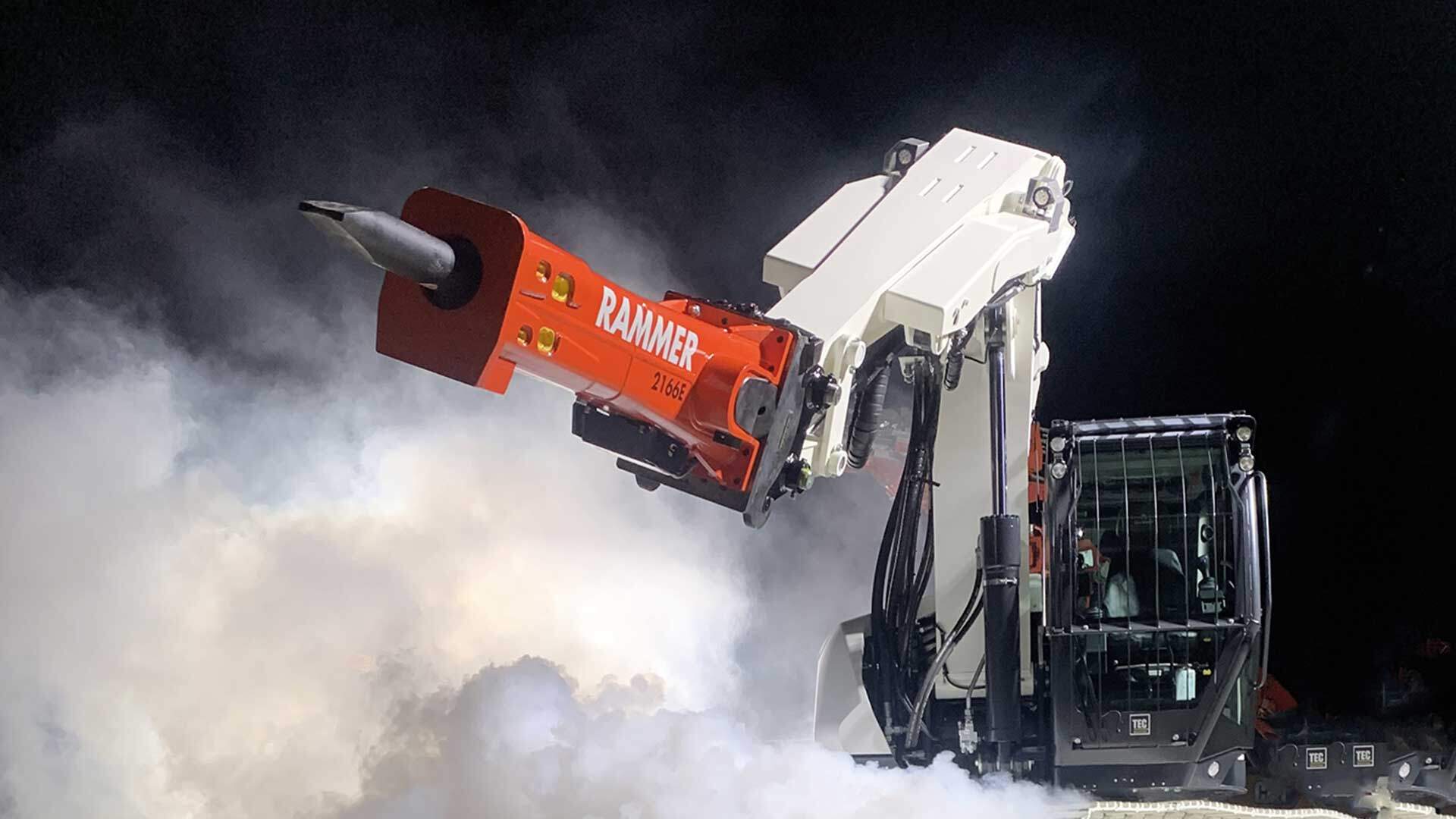A periodic service is extremely essential in ensuring a long life for your car and goes a long way to keeping your vehicle reliable and niggle-free – rockbreakers are much the same.
However, with rockbreakers, the technology inside determines if more is needed than just regular servicing.
High-pressure membrane accumulators
If your rockbreakers come with high-pressure membrane accumulators, like Rammer Excellence’s line of Rockbreakers, there is no need for regular re-gassing between regular servicing.
Rammer’s sealed high pressure membrane accumulator system makes the rockbreaker gas leakage proof, and it does not require re-fill or any special sealing system outside of regular service intervals.
This simply means that the nitrogen gas inside the rockbreaker lasts for extended periods of time, similar to the air in car tyres that only need testing with regular servicing.
Nitrogen piston accumulators
There are many rockbreakers on the market featuring the original piston head gas design that also have nitrogen piston accumulators and a second pressure-dampening membrane type accumulator.
These style of rockbreakers have the nitrogen gas pressure in the back head set at around 16 bar by the manufacturer and due to dynamic nature of the gas sealing system the gas pressure slowly decreases over time because the gas behind the piston slowly leaks through the seals.
As a rockbreaker’s impact energy is directly proportional to this gas pressure, gas leakage means a loss of impact energy and rockbreaker starts losing its breaking power and will require re-gassing.
Walkers Hammers sales manager Mike Coghlan said re-gassing is something he takes many calls about.
“I have customers contacting me and seeking for advice as their rockbreaker that otherwise is working fine does not seem to be breaking as well as it used to. This is often due to gas gradually leaking out and resulting in loss of performance,” he said.
“Gas leakage cannot be avoided but this slow loss isn’t easy for operators to identify. It becomes an issue once the gas pressure has dropped to under 13 bar or loss of performance has finally become evident.
“Loss of production can be quite large overtime and I advise customers who have rockbreakers with the gas piston accumulators to be prepared to re-gas their breaker when required. Customer can either rent a nitrogen gas bottle and perform refilling onsite, contact our site service team or bring their breaker to our workshop.”
Recharging enables the breaker to regain maximum breaking power but it often means additional downtime and extra costs.
Minimise downtime
Membrane type of accumulator eliminates oil pressure peaks inside the rockbreaker and hydraulic circuit of the carrier ensuring maximum piston acceleration and removing the need for time consuming re-gassing.
This article was published in australiamining.com.au in April 2022

